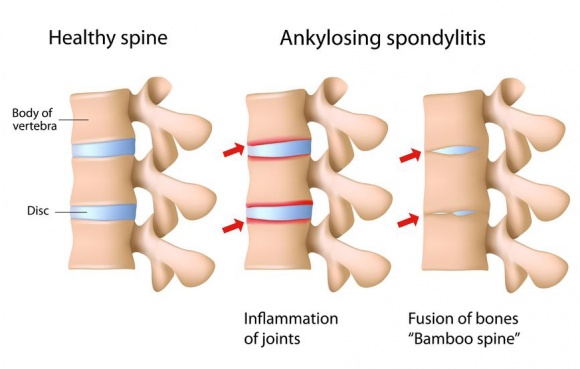Ankylosing Spondylitis
What is Ankylosing Spondylitis?
Ankylosing spondylitis is an inflammatory disease that, over time, can cause some of the bones in the spine (vertebrae) to fuse. This fusing makes the spine less flexible and can result in a hunched posture. If ribs are affected, it can be difficult to breathe deeply.
Ankylosing spondylitis affects men more often than women. Signs and symptoms typically begin in early adulthood. Inflammation can also occur in other parts of the body — most commonly, the eyes.
There is no cure for ankylosing spondylitis, but treatments can lessen symptoms and possibly slow progression of the disease.

Symptoms
Early signs and symptoms of ankylosing spondylitis might include pain and stiffness in the lower back and hips, especially in the morning and after periods of inactivity. Neck pain and fatigue also are common. Over time, symptoms might worsen, improve or stop at irregular intervals.
The areas most commonly affected are:
- The joint between the base of the spine and the pelvis.
- The vertebrae in the lower back.
- The places where tendons and ligaments attach to bones, mainly in the spine, but sometimes along the back of the heel.
- The cartilage between the breastbone and the ribs.
- The hip and shoulder joints.
Causes
Ankylosing spondylitis has no known specific cause, though genetic factors seem to be involved. In particular, people who have a gene called HLA-B27 are at a greatly increased risk of developing ankylosing spondylitis. However, only some people with the gene develop the condition.
Risk factors
Men are more likely to develop ankylosing spondylitis than are women. Onset generally occurs in late adolescence or early adulthood. Most people who have ankylosing spondylitis have the HLA-B27 gene. But many people who have this gene never develop ankylosing spondylitis.

DR Shruti Bajad
MBBS, MD (Internal Medicine)
Consultant Rheumatologist
